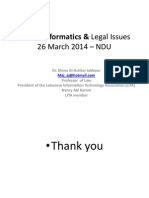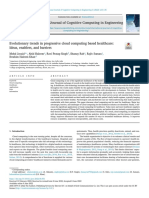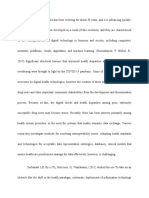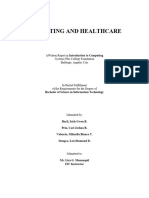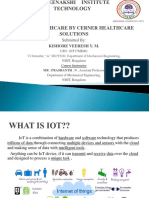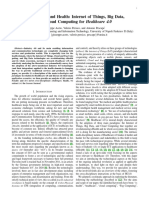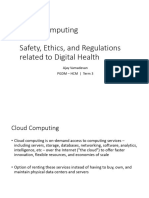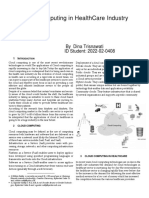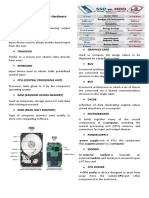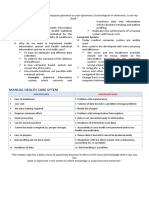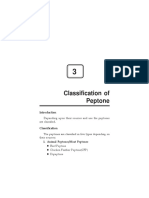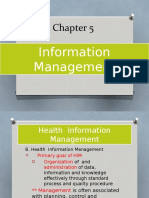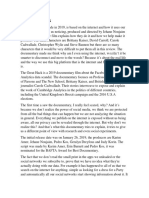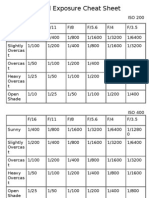0% found this document useful (0 votes)
55 views2 pagesChapter 3
This document discusses concepts related to eHealth, clinical intelligence, telehealth, mHealth, and cloud computing. It defines eHealth as the use of information and communication technologies for health, including treating patients, conducting research, educating health workers, and tracking disease. Clinical intelligence is defined as electronically aggregating accurate and timely clinical data into meaningful information to achieve optimal health outcomes. Telehealth involves providing personalized healthcare over a distance using clinical data, electronic transfer of information, and tailored feedback from healthcare professionals. MHealth refers to using mobile devices to improve health outcomes, services, and research. Cloud computing provides on-demand access to configurable computing resources over a network with features like self-service, broad network access, resource pooling and
Uploaded by
AirishCopyright
© © All Rights Reserved
We take content rights seriously. If you suspect this is your content, claim it here.
Available Formats
Download as DOCX, PDF, TXT or read online on Scribd
0% found this document useful (0 votes)
55 views2 pagesChapter 3
This document discusses concepts related to eHealth, clinical intelligence, telehealth, mHealth, and cloud computing. It defines eHealth as the use of information and communication technologies for health, including treating patients, conducting research, educating health workers, and tracking disease. Clinical intelligence is defined as electronically aggregating accurate and timely clinical data into meaningful information to achieve optimal health outcomes. Telehealth involves providing personalized healthcare over a distance using clinical data, electronic transfer of information, and tailored feedback from healthcare professionals. MHealth refers to using mobile devices to improve health outcomes, services, and research. Cloud computing provides on-demand access to configurable computing resources over a network with features like self-service, broad network access, resource pooling and
Uploaded by
AirishCopyright
© © All Rights Reserved
We take content rights seriously. If you suspect this is your content, claim it here.
Available Formats
Download as DOCX, PDF, TXT or read online on Scribd
/ 2














